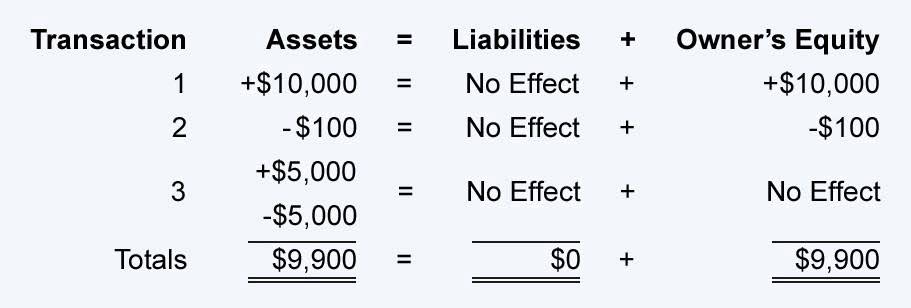
The last line on the statement sums the total of these adjustments and lists the ending retained earnings balance. Lenders and creditors are continually looking for evidence that a business will be able to settle debts and make credit repayments. If you’ve prepared this statement before, you’ll carry over the last period’s beginning balance. If this is your first statement of retained earnings, your starting balance is zero. Retained earnings specifically apply to corporations because this business structure is set up to have shareholders.

Open with the balance sheet from the previous year
- Not onlydid this negatively impact CeladonGroup’s stock price and lead to criminalinvestigations, but investors and lenders were left to wonder whatmight happen to their investment.
- Plus, your shareholders will thank you for it, and every business wants happy shareholders.
- When a business earns a surplus income, it can either distribute the surplus as dividends to shareholders or reinvest the balance as retained earnings.
- The purpose of closing entries is to prepare the temporary accounts for the next accounting period.
- This number shows exactly how much money is left to fuel everything from market expansions to daily operations.
- A company may also use the retained earnings to finance a new product launch to increase the company’s list of product offerings.
It is normally prepared as required by the senior management team, the board of directors, or the local authority. As well, it’s a good representation of how much the company’s retained earnings have contributed to an increase in the stock’s market price over time. Clearly, stocks with steady growth retained earnings statement will yield more earnings over time with the money they have held back from shareholders. In most cases, the accounting statement of retained earnings is prepared after the income statement. So when you are creating one, you’ll probably have the income numbers at hand.
Is retained profit the same as net profit?

This error can distort the true financial health of a business and undermine investor confidence. Next, add the net income reported on the income statement for the current period. Net income represents the company’s profits after all expenses and taxes have been QuickBooks deducted. If a net loss occurs, instead of adding, it should be deducted from the retained earnings balance.
Beginning Balance
When presenting financial statements and related information, a lot of people merely pile up the data at hand and put it on display without any additional insights and commentary. So the audience needs to “do the math” themselves to figure out the numbers they want to know. And this will not be playing in your favor as most investors are then left with no context and no easy way to benchmark or understand the financial story you are trying to tell. Most investors would be eager to know these key metrics as they give a rather accurate glance into your company’s financial health, future profitability and the kind of ROI an investor may expect to get. The first item appearing on the statement of retained earnings is the beginning balance of retained earnings you are carrying over from the previous reporting period. If you are creating this statement for the first time, your number will be zero.
What is a Statement of Retained Earnings?

They’re housed on the balance sheet, a section of financial statements that gives investors an indication of a company’s value including its assets and liabilities. For example, IFRS-based financial statements are only required to report the current period of information and the information for the prior period. US GAAP has no requirement for reporting prior periods, but the SEC requires that companies present one prior period for the Balance Sheet and three prior periods for the Income Statement.
Allocate According to your Business Lifecycle: Growth or Consistent Payouts?
This is a reminder that the income statement itself doesnot organize information into debits and credits, but we do usethis presentation on a 10-column worksheet. Unearned revenue had a credit balance of $4,000 in the trialbalance column, and a debit adjustment of $600 in the adjustmentcolumn. Remember that adding debits and credits is like addingpositive and negative numbers.
The dividend payout ratio, which measures the proportion of earnings distributed, reveals a company’s approach to profit allocation. A high ratio may indicate limited reinvestment, while a low ratio suggests a focus on expansion. Changes in dividend policy can signal shifts in corporate strategy or financial condition. Once you’ve subtracted your company’s dividend payments from your net income, you will arrive at your ending retained earnings amount.
Present Your Retained Earnings Statement as Part of Your Business Plan
A statement of retained earnings is a crucial financial document that reveals how much profit your company keeps for reinvestment after paying dividends. It’s part of shareholder’s equity and tracks how much profit the company has kept (rather than paid out as dividends). Over time, it shows the company’s accumulated profits that are reinvested in the business.
- Dividends paid to shareholders are deducted from the retained earnings balance.
- Your funds are always safeguarded in line with the local regulations where Airwallex operates.
- The next step is to record information in the adjusted trial balance columns.
- If a company retains a large portion of earnings but shows stagnant growth in assets or revenue, it may signal inefficiencies in capital allocation.
- If thereis a difference between the two numbers, that difference is theamount of net income, or net loss, the company has earned.
- Dividends, the portion of earnings returned to shareholders, directly reduce retained earnings.
It reflects the reinvestment Medical Billing Process of earnings into the business for growth, debt reduction, or other purposes. Analyzing this statement helps investors gauge a company’s financial health. Prior period adjustments are corrections of errors made in previous financial statements. These adjustments can arise from mistakes in calculations, misstatements, or changes in accounting principles. It is important to properly document and explain any adjustments made to retained earnings to ensure transparency and accuracy in financial reporting.